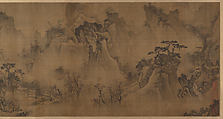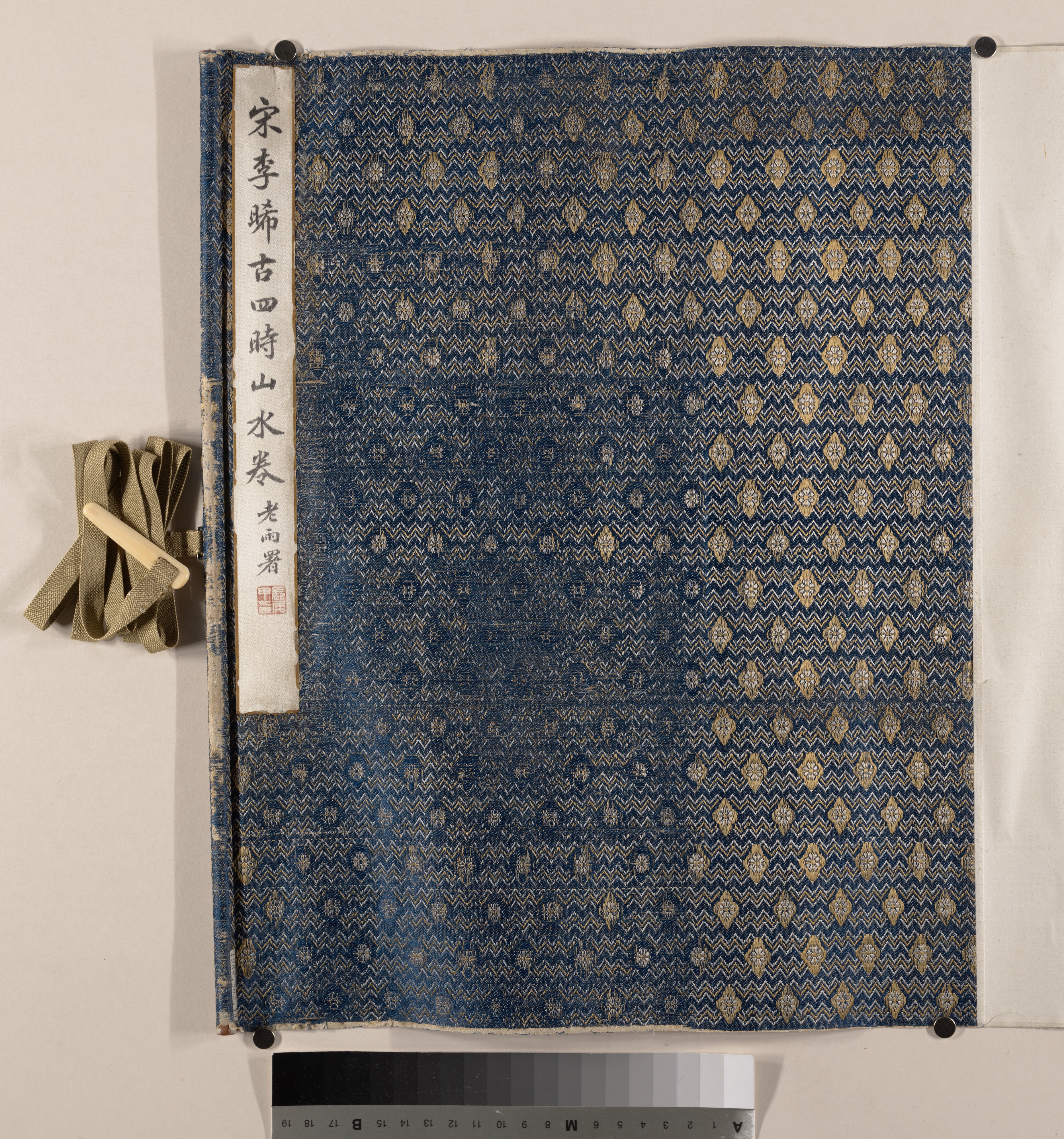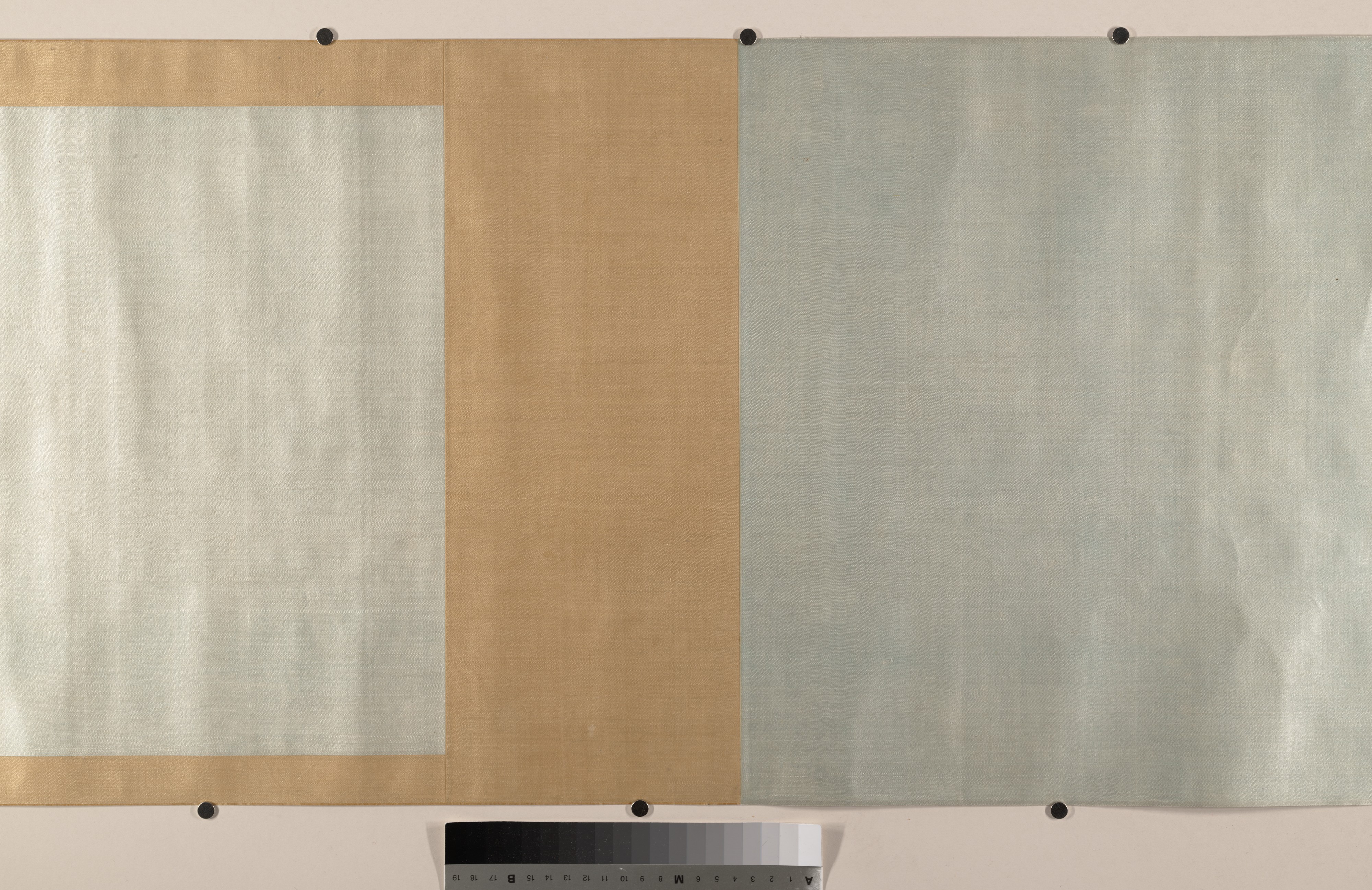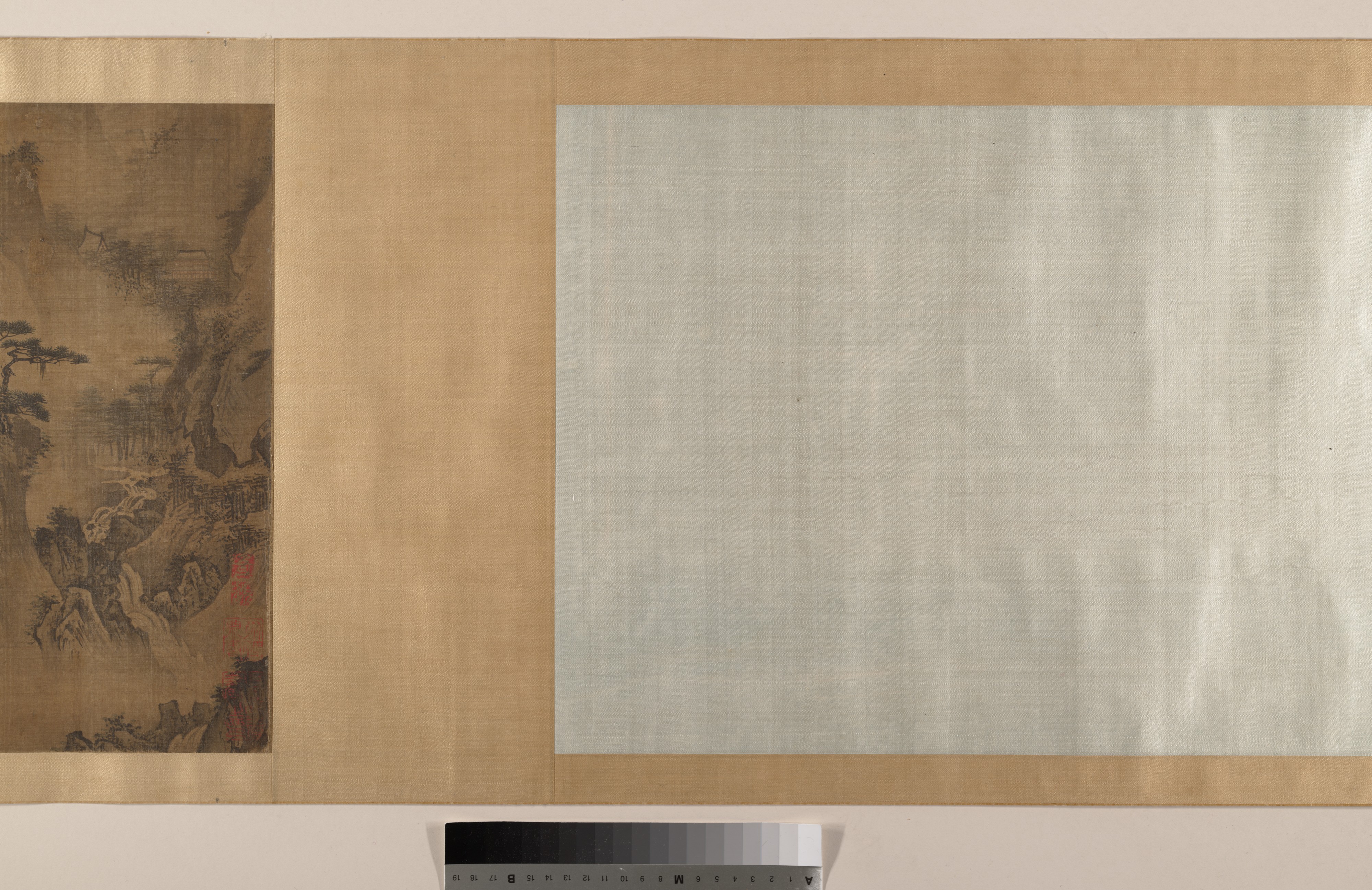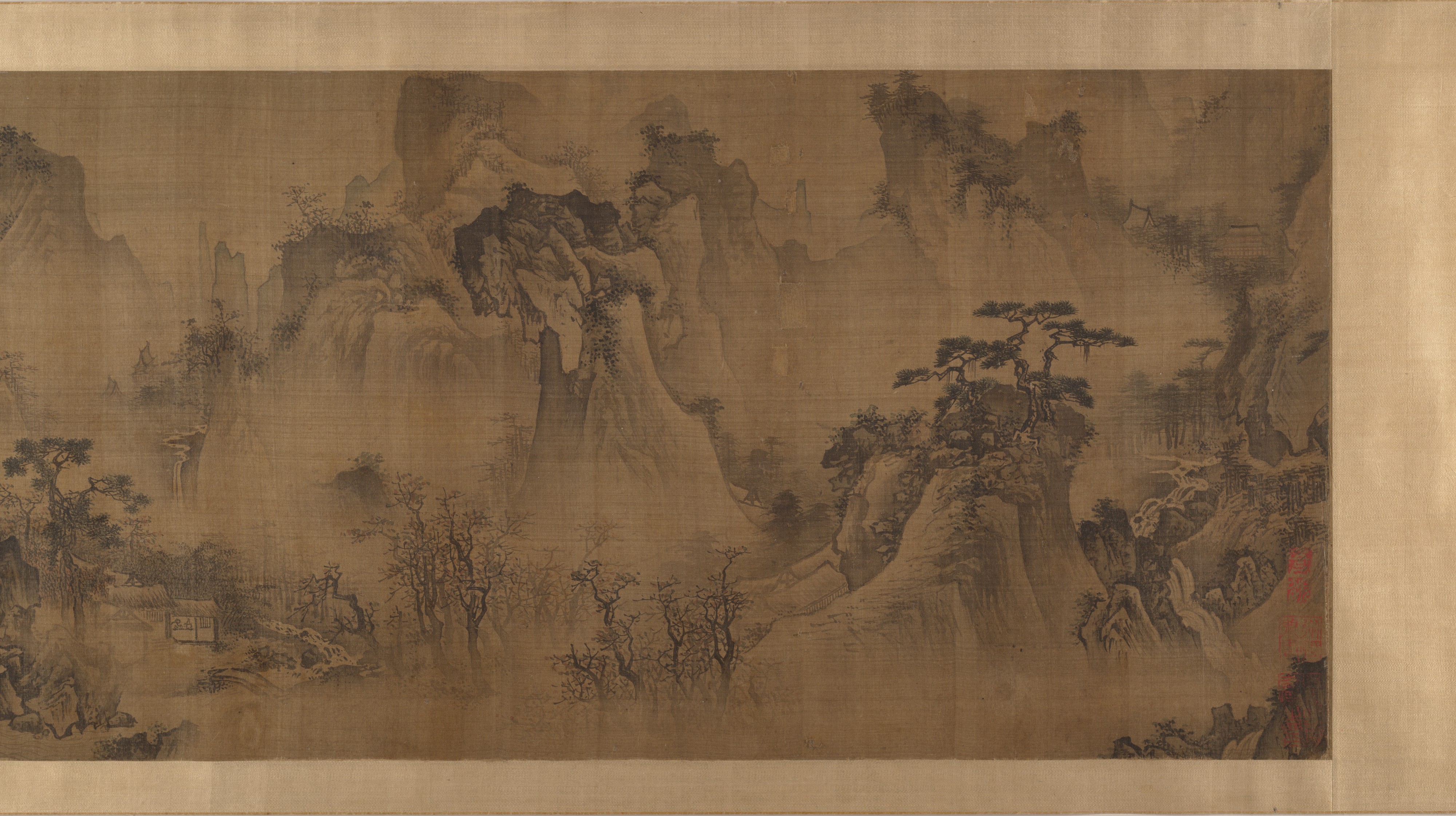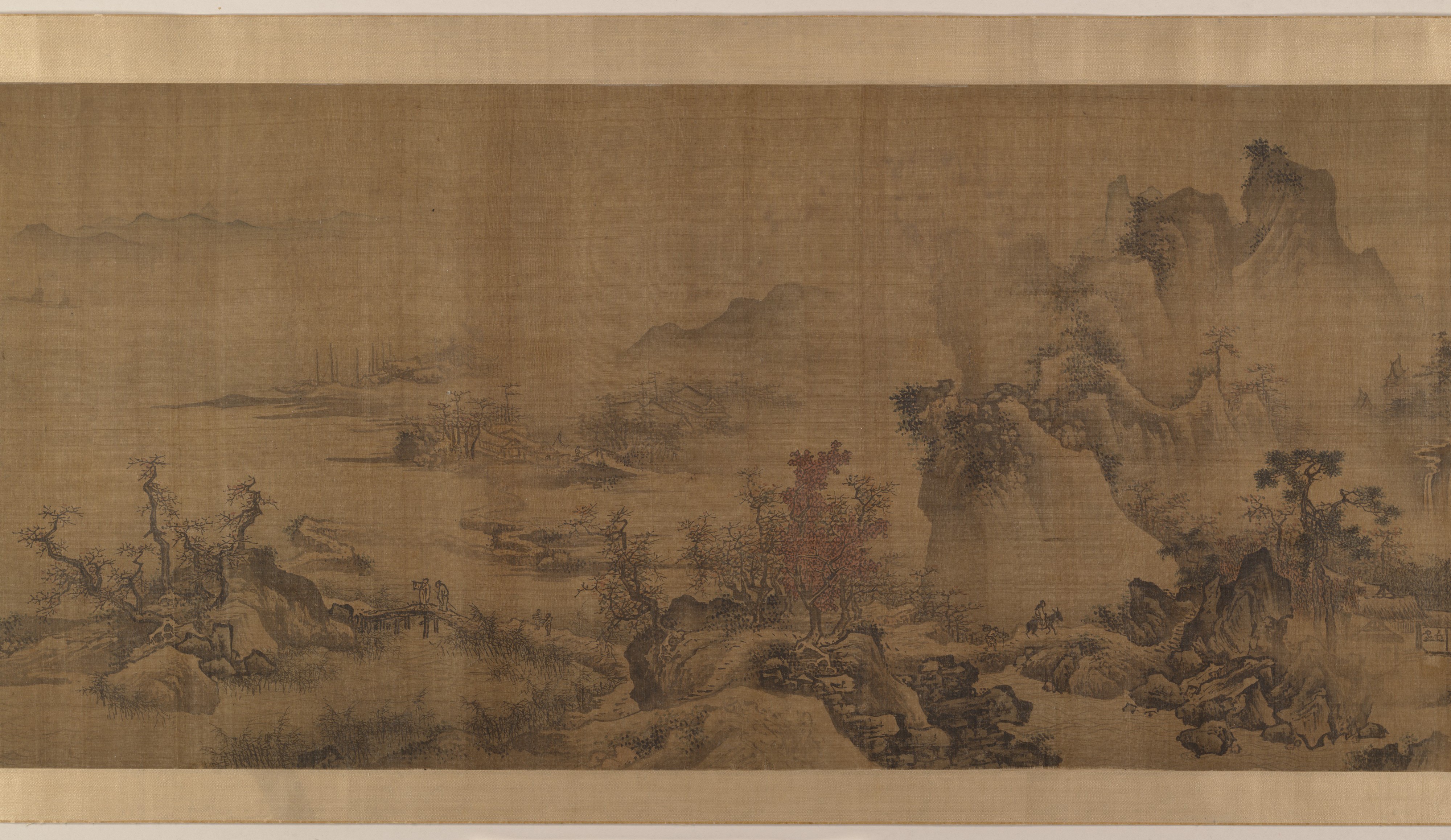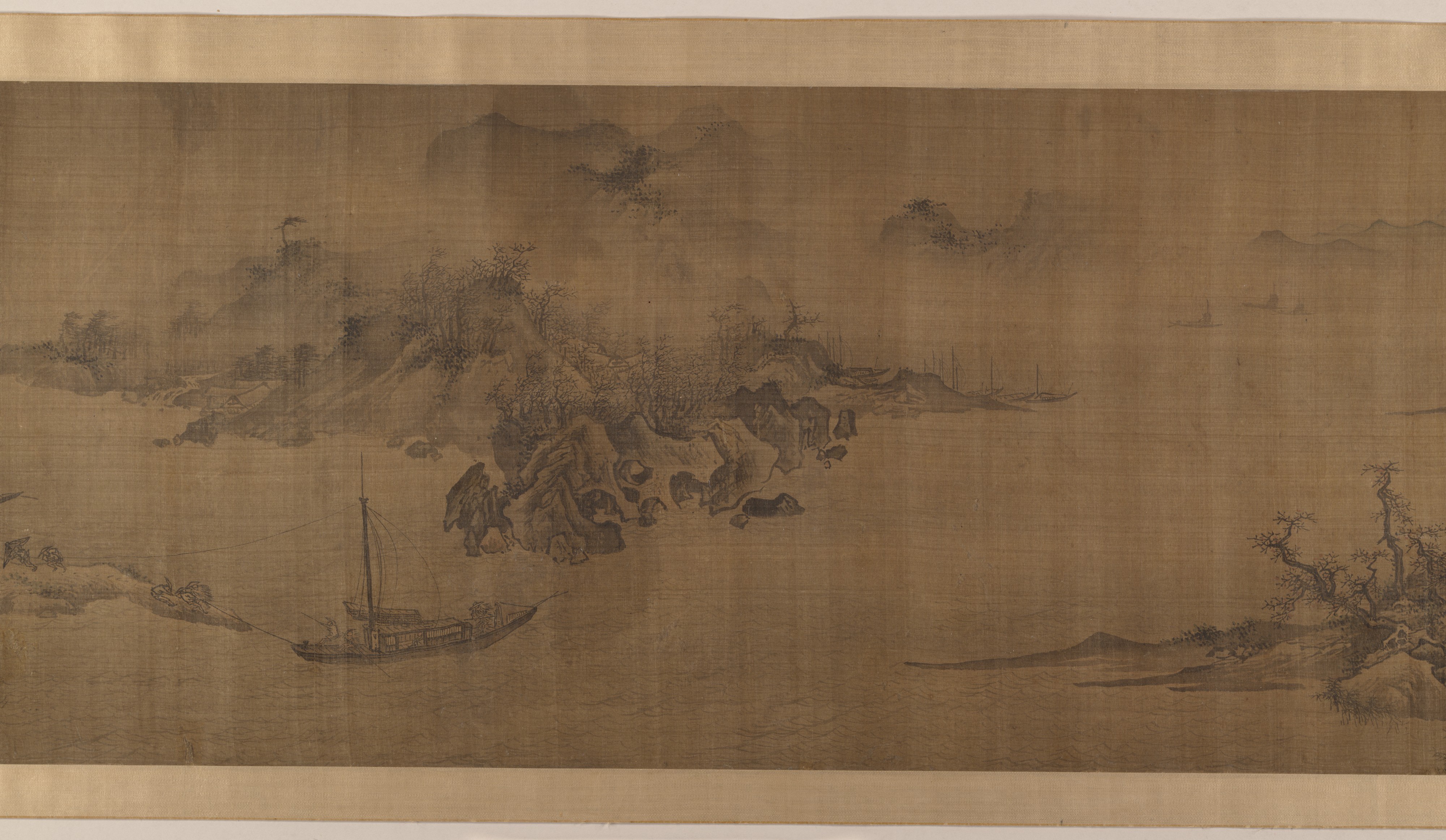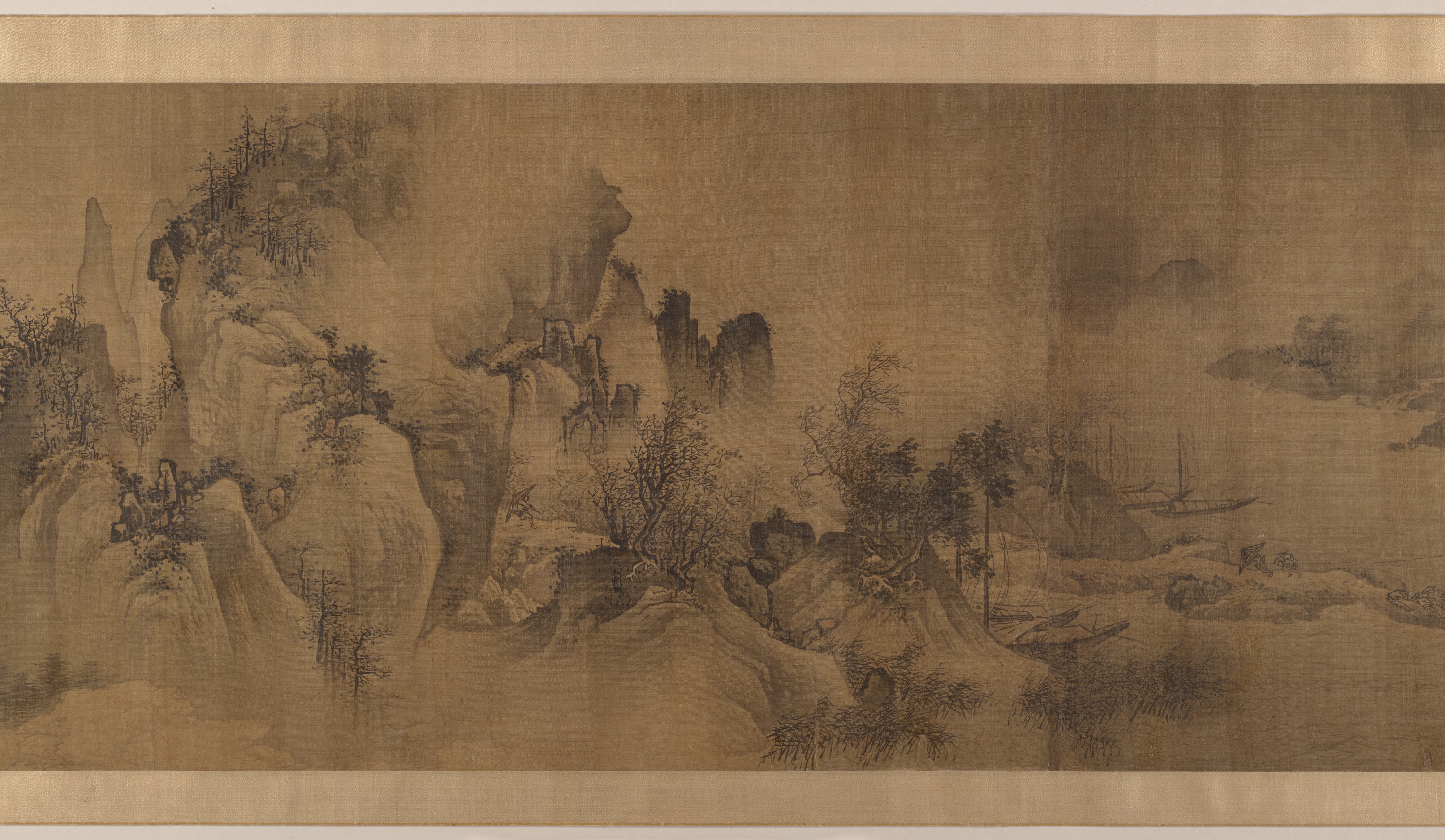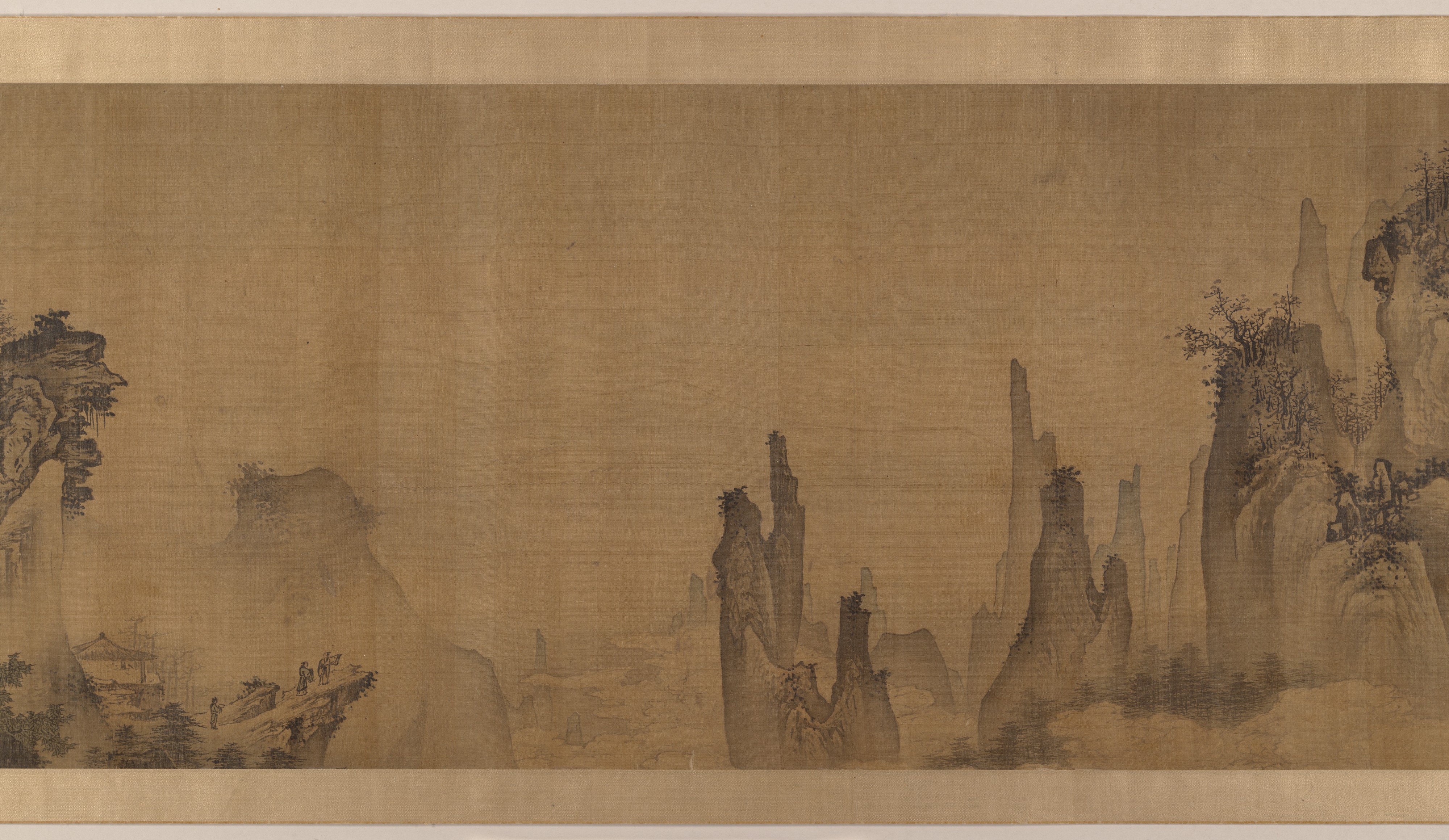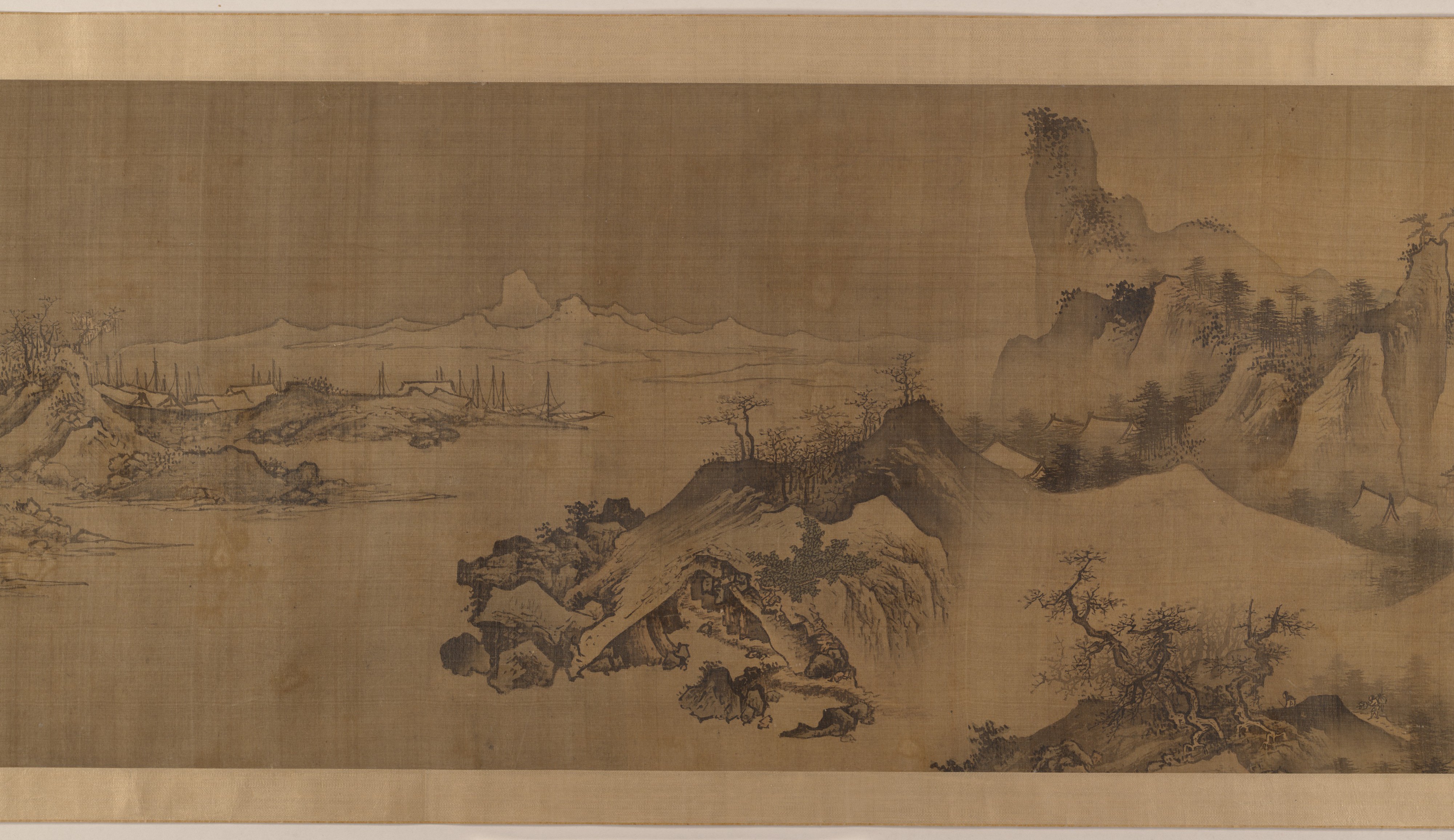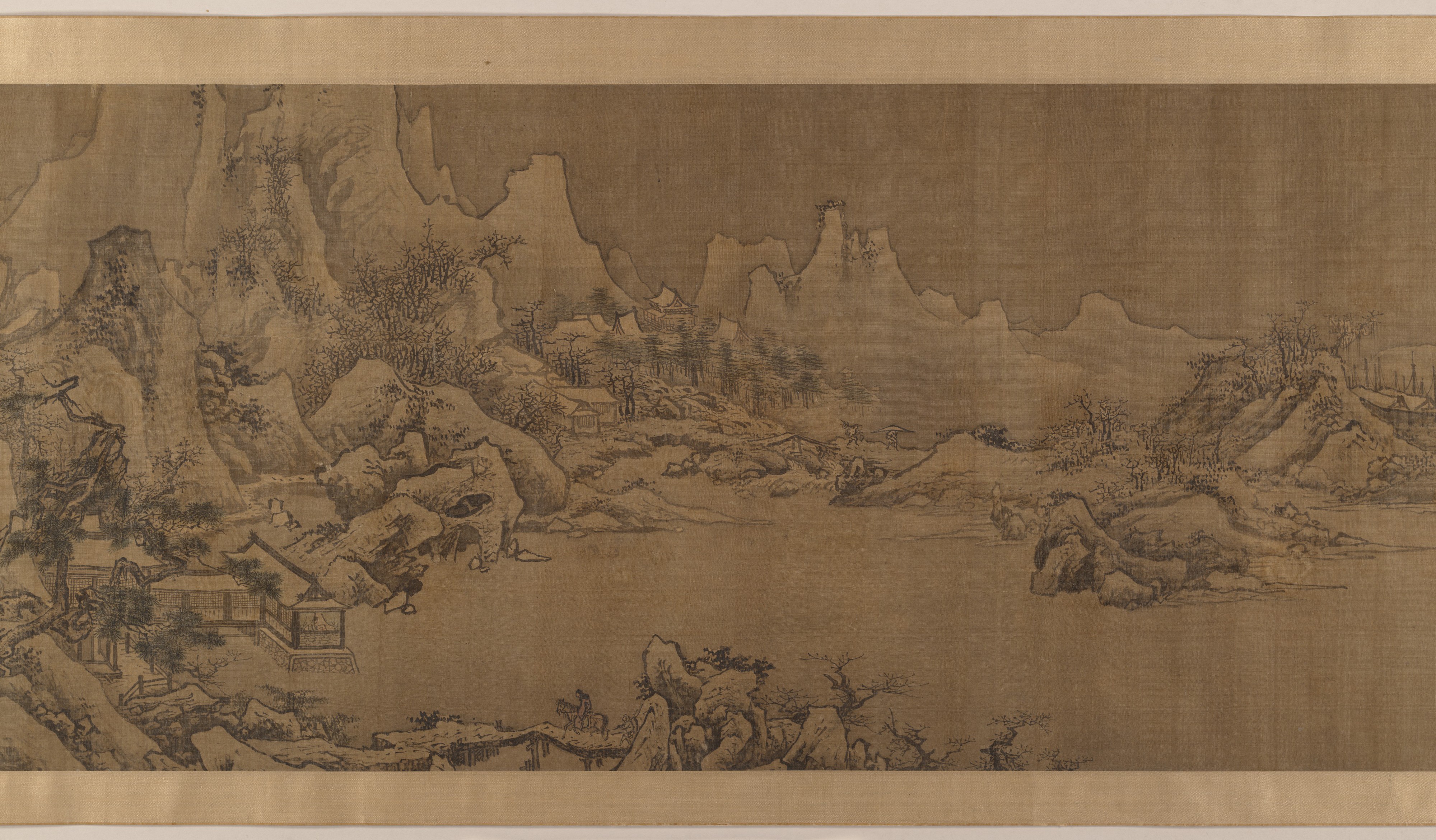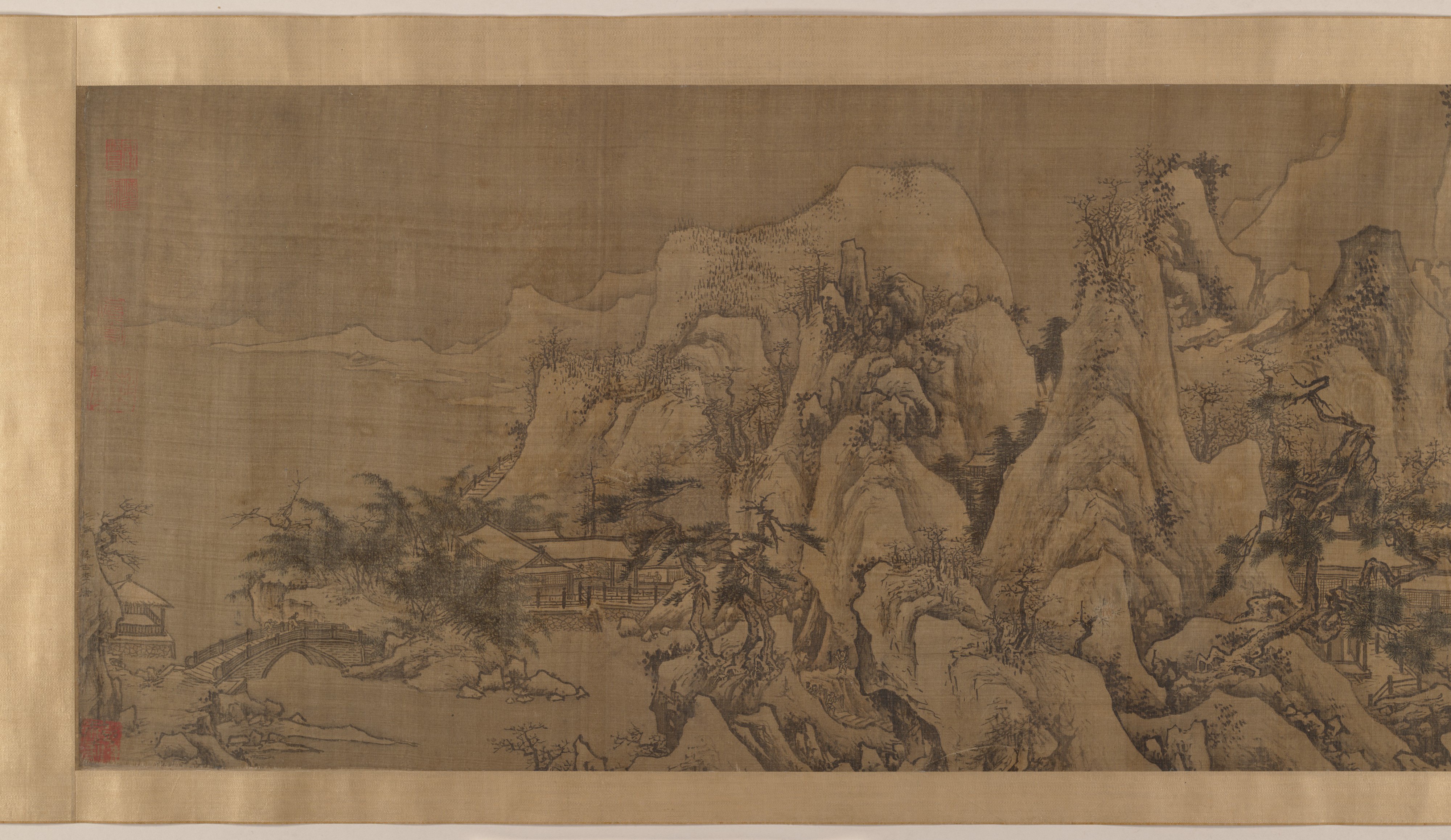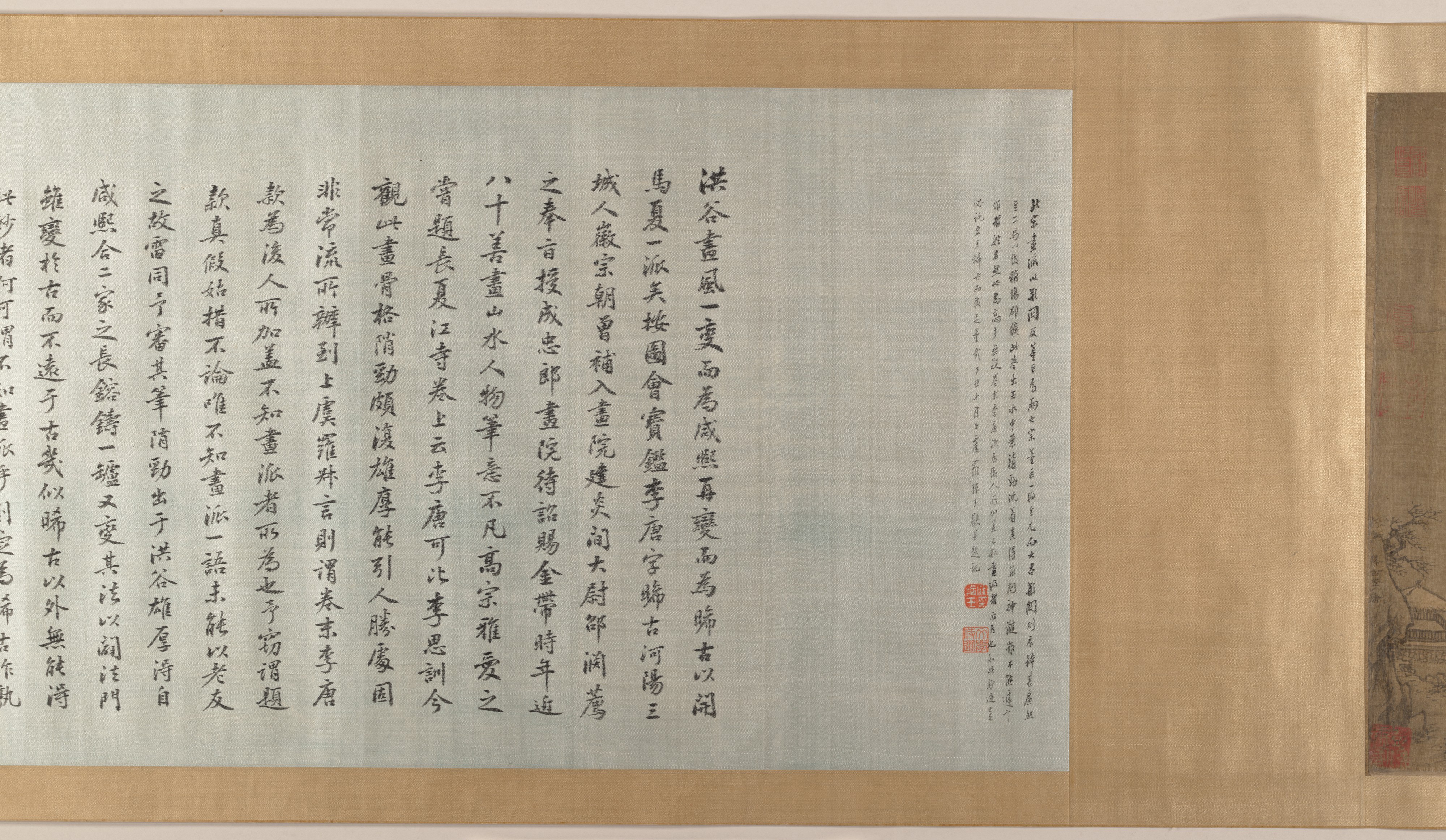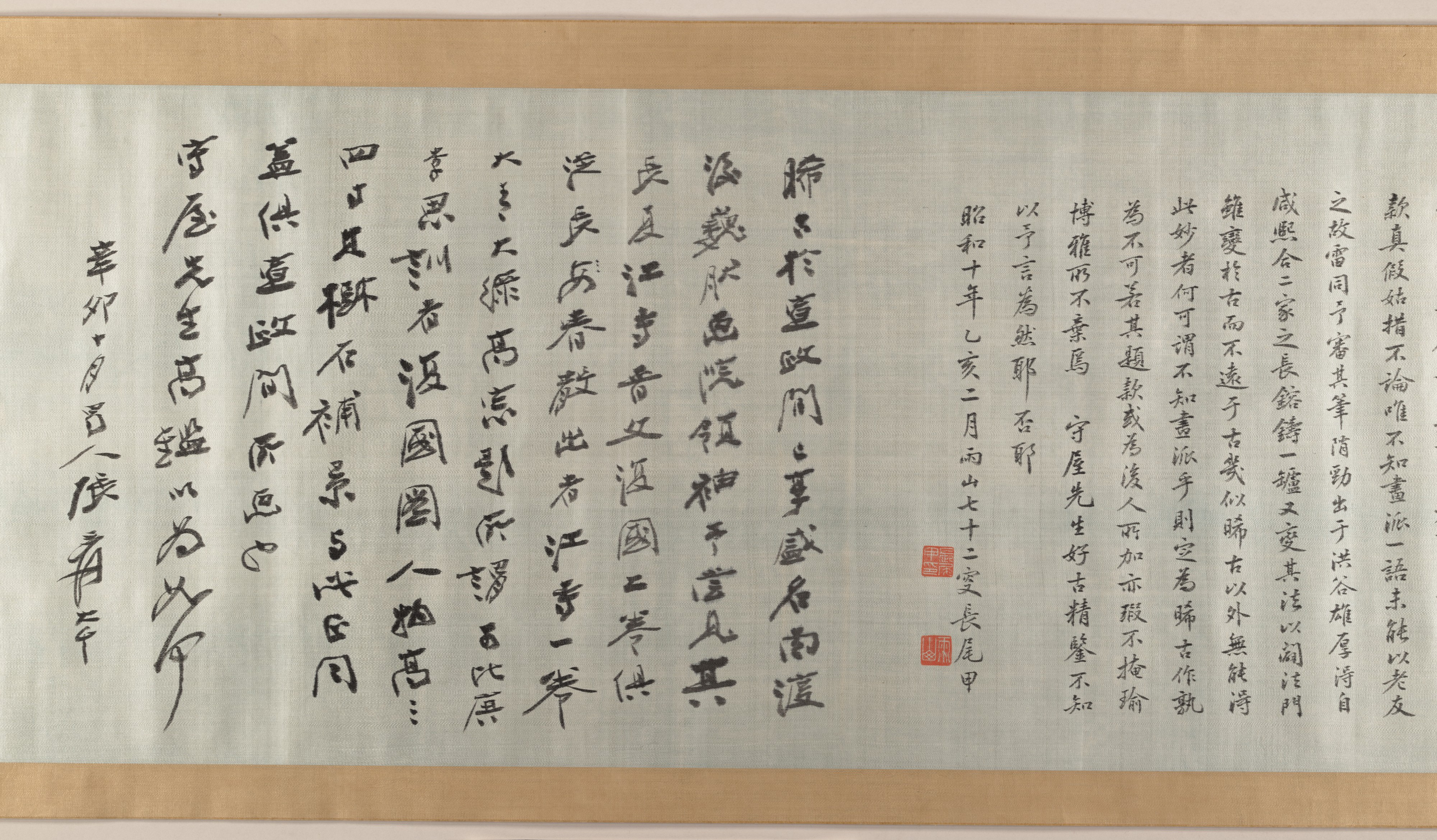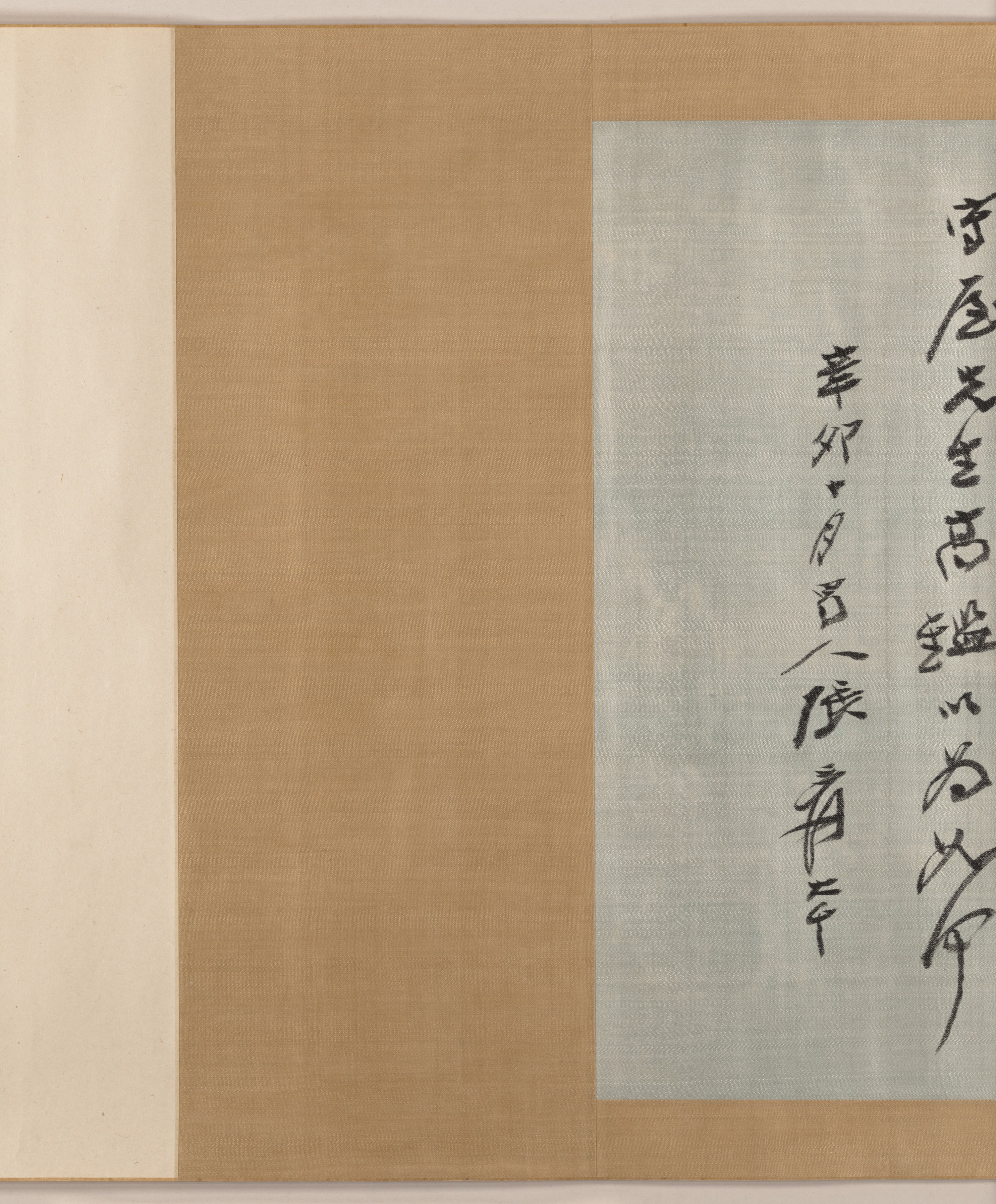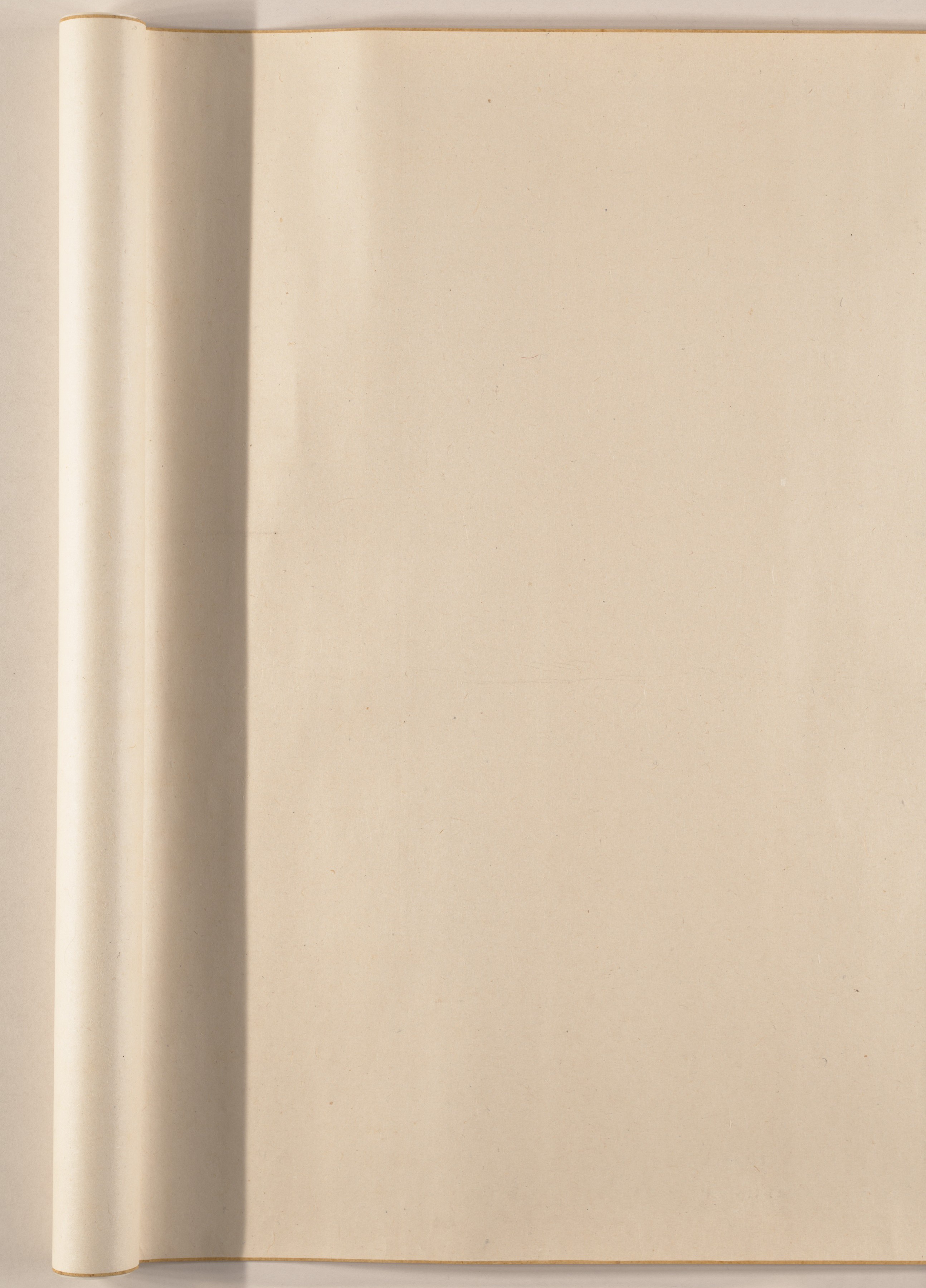The Four Seasons
Unidentified artist
Formerly attributed to Li Tang Chinese
Not on view
The theme of this painting is the progress of the seasons from spring to winter. The scroll begins with a scene of jagged peaks and mist-filled valleys: trees are tinged with the delicate red of new leaf buds and blossoms; turbulent mountain streams suggest the melting snow of early spring. The composition next opens into a broad vista of a lake whipped by a summer rainstorm. Autumn, with its clear skies, is a time for climbing, and the perspective shifts to high mountains with a view across distant pinnacles. In the final scene, wintry sky and water appear dark against snow-covered mountains, where only the pine and bamboo remain green.
In its combination of eclectic Northern and Southern Song compositional elements and brush techniques, this landscape belongs to the revival of Song styles patronized by the conservative early Ming court. Kept alive during the fourteenth century by such artists as Tang Di (ca. 1296–1364), this style gained new prominence during the early fifteenth century in the hands of such artists as Dai Jin, Zhou Wenjing, and Li Zai.
#7626. The Four Seasons
Due to rights restrictions, this image cannot be enlarged, viewed at full screen, or downloaded.
This artwork is meant to be viewed from right to left. Scroll left to view more.
